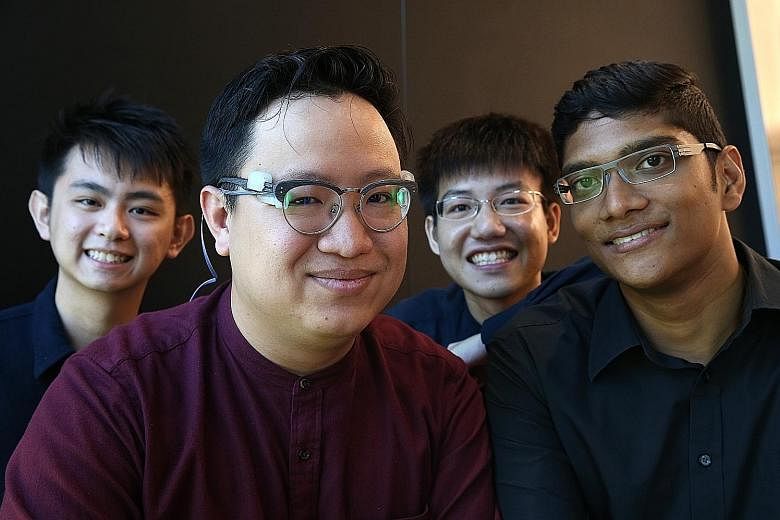A gadget for deaf people inspired by visual cues in video games has come up tops in a design contest for students organised in 23 countries.
The winners of the £2,000 (S$3,580) James Dyson Award cash prize in Singapore are seven new graduates from the Singapore University of Technology and Design (SUTD).
Taking its name from the word "peripheral", Peri consists of RGB LEDs attached to the edges or sides of a pair of spectacle frames.
The LEDs, connected to a Raspberry Pi, a credit card-sized computer to which a microphone is attached, flash in different colours to identify the direction and intensity of a sound. Users can customise settings in an app to decide the colours and patterns triggered by, say, the sound of an oncoming vehicle.
The team of seven started their research in 2014 in their first year at SUTD. After spending several months consulting people who had hearing loss, they decided to design a device that would improve their situational awareness.
Team leader Pavithren V.S. Pakianathan, 26, said: "We wanted to create a solution that is socially conscious. By working closely with a few individuals, we learnt more about the challenges they face and were able to incorporate the learnings to design a better prototype."
The device's target users are those who have severe hearing loss or are completely deaf and unable to benefit much from hearing aids.
The idea was born out of video games, where a flashing light on the screen is sometimes used to signal to a player that he is being "attacked" from the side. Another source of inspiration was the Google Glass, an optical head-mounted display shaped like a pair of eyeglasses.
The annual James Dyson Award, run by the James Dyson Foundation, is open to university-level students or recent graduates of product design, industrial design and engineering. The brief is simple: Design something that solves a problem.
Dr Her-Mann Tsai, one of the national judges and inventor of the 2010 Youth Olympic Games' "fire tornado", said Peri has a high potential for real-life use. The national winners stand a chance to win the International Prize, awarded next month.
Mr Pavithren said the team is exploring how it might refine the prototype and make the device publicly available.
Teammate Yi Jiayu, 24, said some potential users were concerned that the device could make their disabilities easily recognisable. Thus, it was important that the final version be as sleek as possible, and "fit inconspicuously into their daily lives".
Five per cent of the world's population - 360 million - suffer from disabling hearing loss, according to the World Health Organisation.
Ms Farawaheeda Mohd Adam, 41, one of the deaf people consulted by the SUTD team, said the device was "a light attachment that will not get in the way of comfort... It is helpful for the deaf and hard of hearing to be able to integrate into society, and be more independent".


